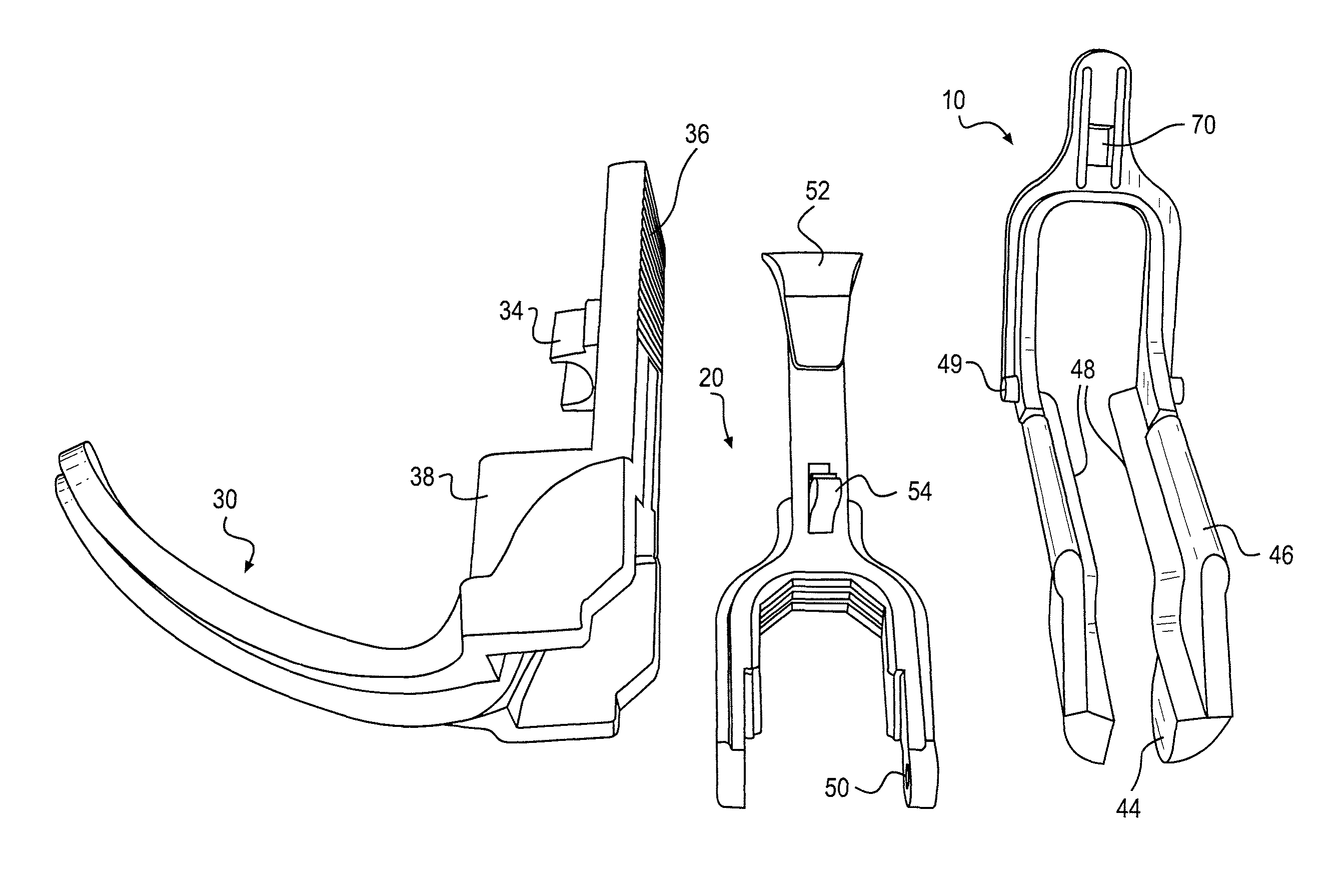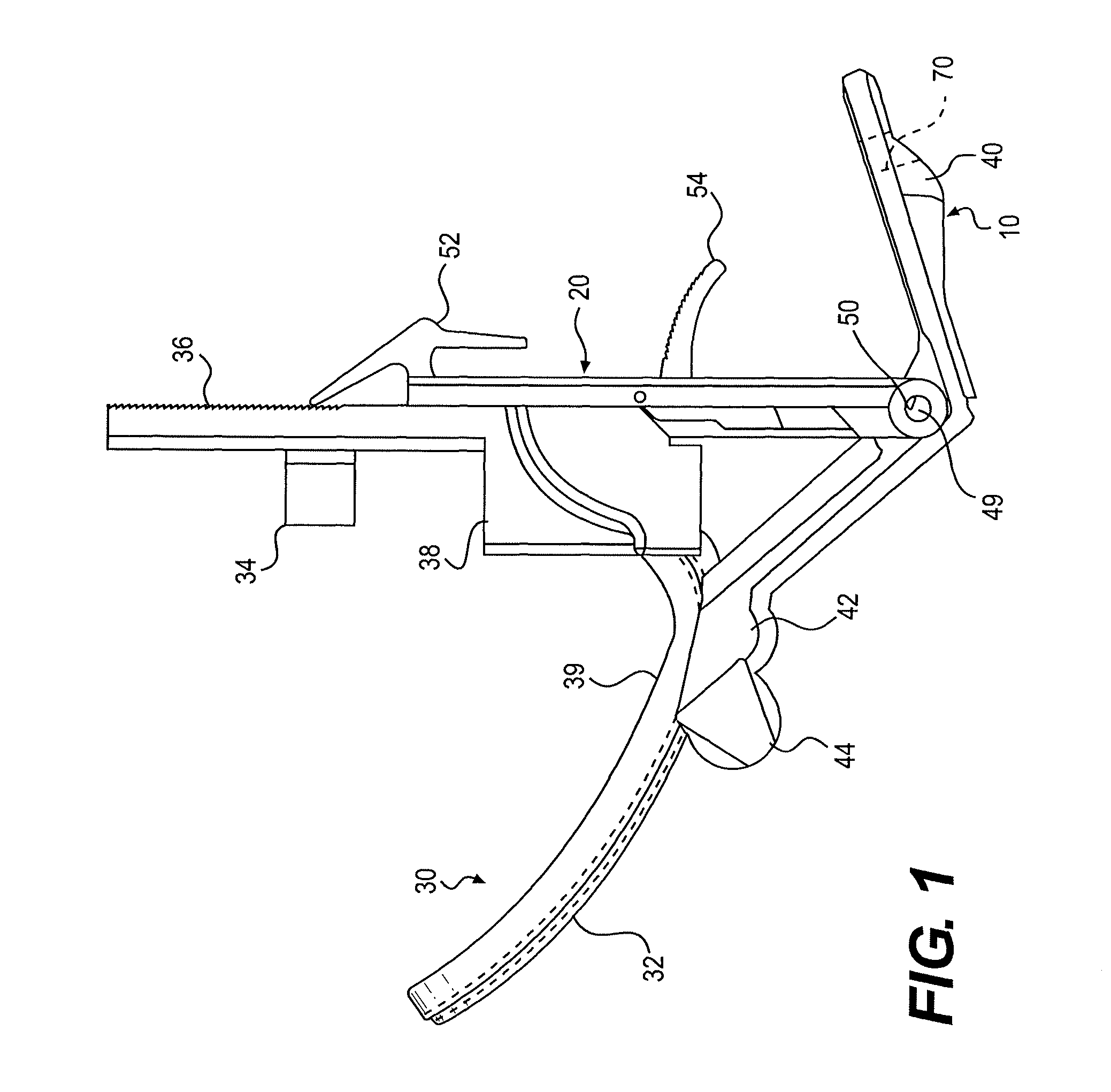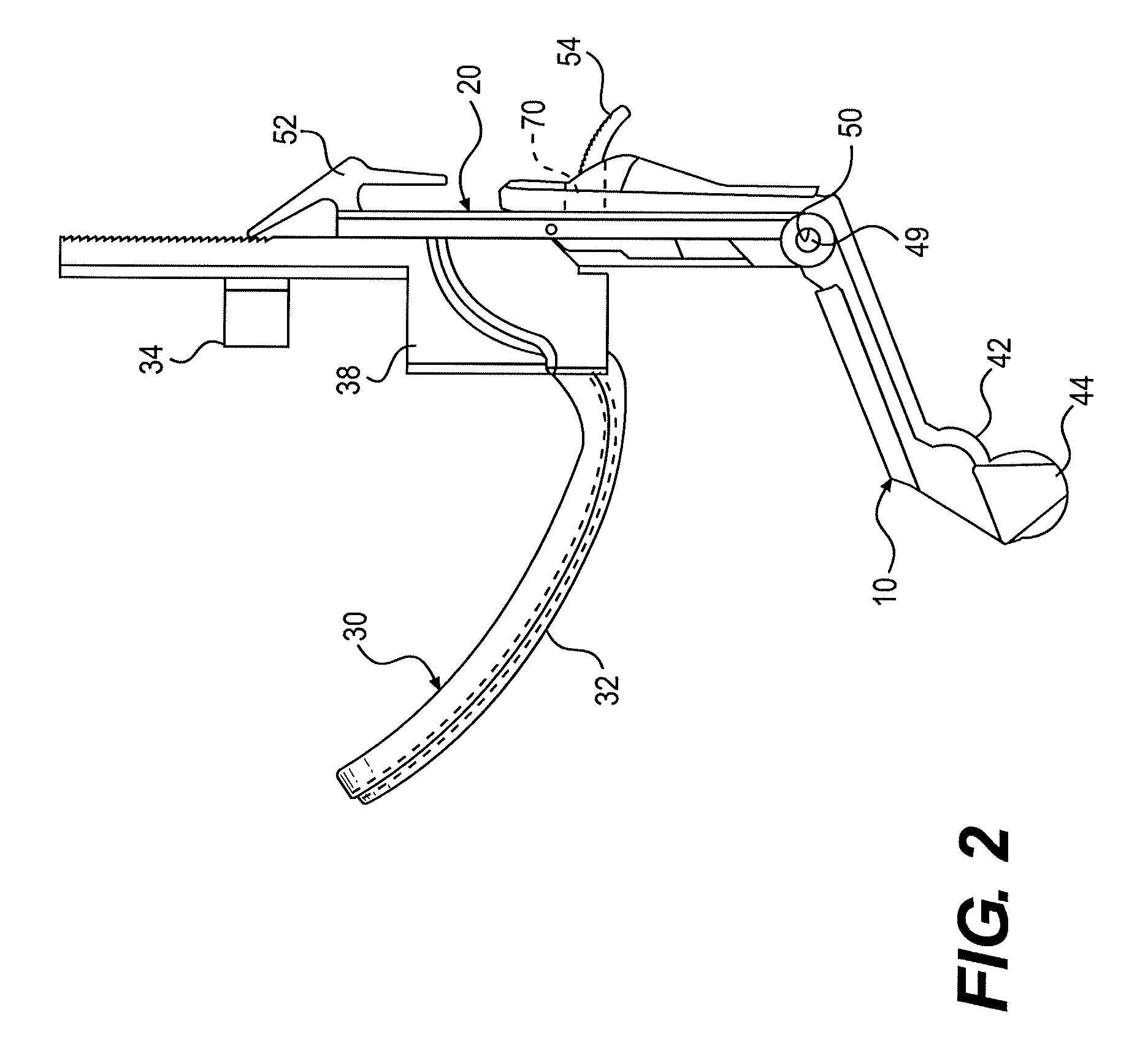Laryngoscope
a laryngoscope and glottic view technology, applied in the field of medical instruments, can solve the problems of limited mouth opening, lack of glottic view in a small but significant number of patients, and little space for manipulating the endotracheal tube, etc., to achieve improved and broader illumination, simple use, and reliable
- Summary
- Abstract
- Description
- Claims
- Application Information
AI Technical Summary
Benefits of technology
Problems solved by technology
Method used
Image
Examples
Embodiment Construction
[0052]Referring to FIG. 1, which illustrates the closed position of the preferred embodiment of the present invention, the self-retaining laryngoscope is composed of three components: 1) the palate brace or blade 10, 2) the slider 20, and 3) the tongue blade 30.
[0053]The tongue blade 30 includes the angulated blade 39 with light conduction “rail”32, the light source clip 34, an interface 38, and the teeth 36 for interaction with the slider thumb piece 52 to allow retraction and wider opening of the mouth and airway.
[0054]The configuration of the tongue blade 30 has been shown during clinical trials to require an angulation 39 of the blade. A straight blade does not conform to the natural curve of the airway. The new angle 39 of the present invention in its preferred embodiment was clinically tested for optimization, and was found to be a curve of approximately 60 degrees. It is sized to be either small, medium, or large.
[0055]The narrowing of the width of the tongue blade 30 to 2 ce...
PUM
 Login to View More
Login to View More Abstract
Description
Claims
Application Information
 Login to View More
Login to View More - R&D
- Intellectual Property
- Life Sciences
- Materials
- Tech Scout
- Unparalleled Data Quality
- Higher Quality Content
- 60% Fewer Hallucinations
Browse by: Latest US Patents, China's latest patents, Technical Efficacy Thesaurus, Application Domain, Technology Topic, Popular Technical Reports.
© 2025 PatSnap. All rights reserved.Legal|Privacy policy|Modern Slavery Act Transparency Statement|Sitemap|About US| Contact US: help@patsnap.com



